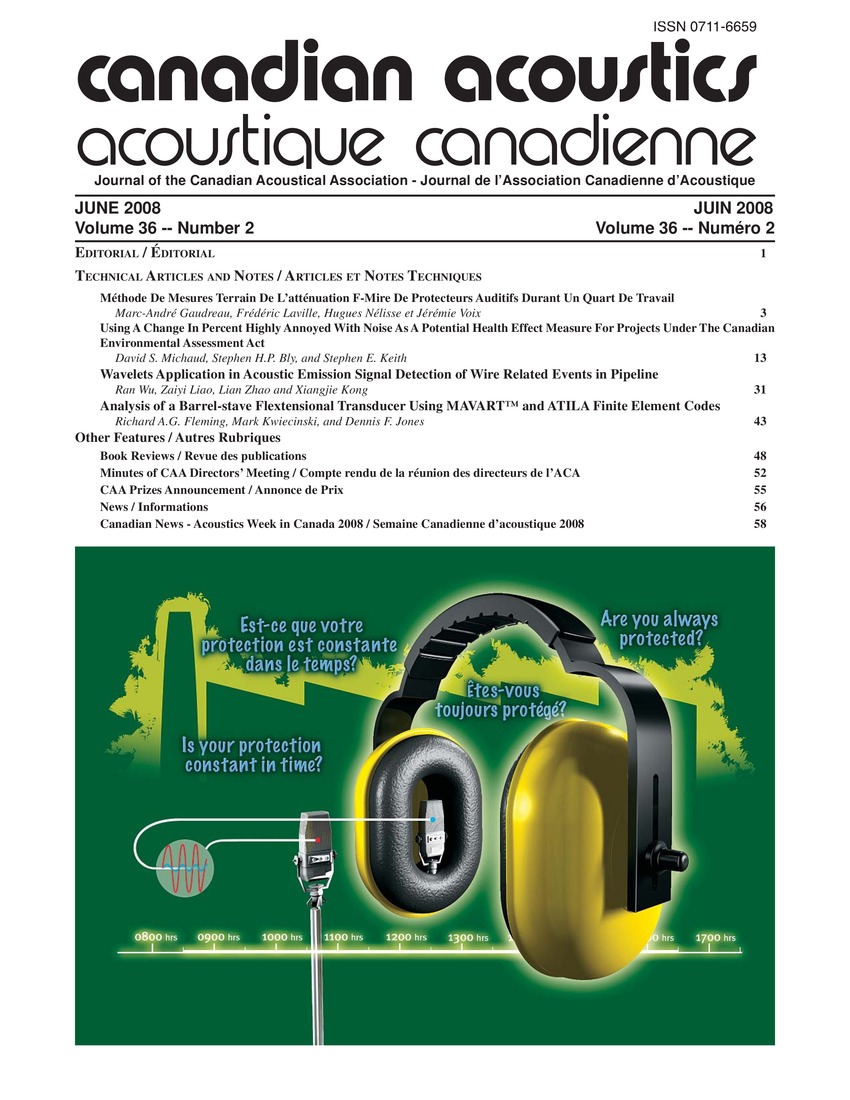Analysis of a barrel-stave flextensional transducer using MAVART and ATILA finite element codes
Keywords:
Acoustic transducers, Acoustics, Codes (standards), Codes (symbols), Computer systems, Frequency response, Laplace equation, Modal analysis, Photoacoustic effect, Radiation, Resonance, Transducers, Underwater acoustics, Acoustic communications, Acoustic radiations, Atlantic, calibration measurements, Coastal surveillance, Computer modelling, Defence Research and Development Canada (DRDC), Finite element (FE) code, Flexural resonance frequencies, High powers, model predictions, Omni directional radiation patterns, Outside diameter (OD), Sensor technologies, Transmitting voltage responseAbstract
A small barrel-stave flextensional transducer, designed and tested at Defence Research and Development Canada - Atlantic (DRDC Atlantic), is a candidate source for underwater coastal surveillance and acoustic communications applications. This high-power transducer (in excess of 190 dB re 1 ?Pa @ 1 m) has an outside diameter, length and mass of 5.7 cm, 12.7 cm, and 1.1 kg, respectively. The measured fundamental flexural resonance frequency was 1.8 kHz with a transmitting voltage response of 118 dB re 1 ?Pa/V @ lm and an omnidirectional radiation pattern. Two computer models were developed for this transducer using finite element codes MAVART™ (Model to Analyze the Vibrations and Acoustic Radiation of Transducers) and ATILA (Analysis of Transducers by Integration of Laplace equations). Comparisons are made between the calibration measurements and the model predictions. [Summer student supported in part by Sensor Technology Limited.].Additional Files
Published
How to Cite
Issue
Section
License
Author Licensing Addendum
This Licensing Addendum ("Addendum") is entered into between the undersigned Author(s) and Canadian Acoustics journal published by the Canadian Acoustical Association (hereinafter referred to as the "Publisher"). The Author(s) and the Publisher agree as follows:
-
Retained Rights: The Author(s) retain(s) the following rights:
- The right to reproduce, distribute, and publicly display the Work on the Author's personal website or the website of the Author's institution.
- The right to use the Work in the Author's teaching activities and presentations.
- The right to include the Work in a compilation for the Author's personal use, not for sale.
-
Grant of License: The Author(s) grant(s) to the Publisher a worldwide exclusive license to publish, reproduce, distribute, and display the Work in Canadian Acoustics and any other formats and media deemed appropriate by the Publisher.
-
Attribution: The Publisher agrees to include proper attribution to the Author(s) in all publications and reproductions of the Work.
-
No Conflict: This Addendum is intended to be in harmony with, and not in conflict with, the terms and conditions of the original agreement entered into between the Author(s) and the Publisher.
-
Copyright Clause: Copyright on articles is held by the Author(s). The corresponding Author has the right to grant on behalf of all Authors and does grant on behalf of all Authors, a worldwide exclusive license to the Publisher and its licensees in perpetuity, in all forms, formats, and media (whether known now or created in the future), including but not limited to the rights to publish, reproduce, distribute, display, store, translate, create adaptations, reprints, include within collections, and create summaries, extracts, and/or abstracts of the Contribution.


